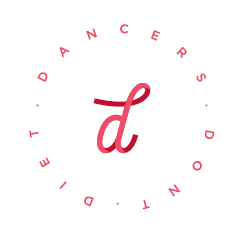Dance Nutrition
Did you know that proper nutrition and rest are one of the top five factors in reducing and preventing dance-related injuries?
For dancers to go through training, execute precise movements, develop artistry, communicate stories and emotions, connect with the audience, and continue doing all these for the entire duration of their career, they need to be fuelled adequately.
Important Nutrients for Dancers
All three macronutrients - carbohydrates, proteins, and fats - are important for the dancers to train and dance at their best.
Carbohydrates
Carbohydrates are the major fuel for your training, especially during continuous or high-intensity work. Body stores carbohydrate as glycogen in the muscles and liver, but because body stores are limited, carbohydrates must be replenished regularly.
We often see dancers making the mistake of cutting out or reducing their carbohydrate intake so much, that they lose their stamina and become unable to keep up with the demands of training. Low carbohydrate intake also leads to reduction in concentration and focus, and makes remembering steps difficult for dancers.
Proteins
Proteins are essential for your body’s repair and development. Protein requirements for dancers vary depending on the type of training as well as the stage of training you’re at. Proteins are best utilised when intake is spread throughout the day.
Fats
Dancers shouldn’t fear fats. Fats are important for cell functions, hormone balance, and absorbing fat-soluble vitamins including vitamins A, D, E and K. About 20-35% of your energy intake should come from fats to ensure that your bodily processes are at their optimum.
Does Nutrition Requirement Change with Varying Dance Training Load?
Simple answer is YES. You will need more energy and nutrition in general the more you train.
Nutrient needs vary greatly between individual dancers, but here’s a rule of thumb. Imagine a regular-sized dinner plate (about 25-30cm in diameter) as your main meals plate.
For regular class days where your dancing is less intense, have 1/3 each of grains, proteins, and vegetables/fruits on the plate.
For more intense dancing days, have 1/2 of the plate as grains or starches, and 1/4 each for proteins and vegetables/fruits.
You would also need regular snacks in between meals to ensure your energy needs are met without feeling overly full.
Dancers Don’t Diet
Dieting is the act of depriving the body of what it needs.
A starved body cannot withstand the training.
A starved brain can only be anxious and frightened, with no capacity to grasp various emotions and feelings.
That’s why the concept of ‘Dancers Don’t Diet’ is important - for dancers to fuel their bodies well without deprivation and to perform at their best.
We’re Here To Help
DDD Centre for Recovery specialises in providing nutrition support for dancers. We regularly present at conferences, provide dance nutrition lectures at tertiary education organisations, and run workshops for dancers of all ages and levels (from leisure to professional to retired).
We understand that food and nutrition can be a really sticky topic for dancers, and know that high training load and body ‘ideals’ often lead to malnutrition in dancers.
We are here to help you.
Working with our dietitians mean you will get the support you need to understand your unique body and its needs; to develop ideas and strategies to enhance your eating practices; and to discover how to develop a long-lasting positive relationship with food and your body.
Contact us or book an appointment today.
Don’t forget to check our Resource Page where you can access free dance-specific resources.
